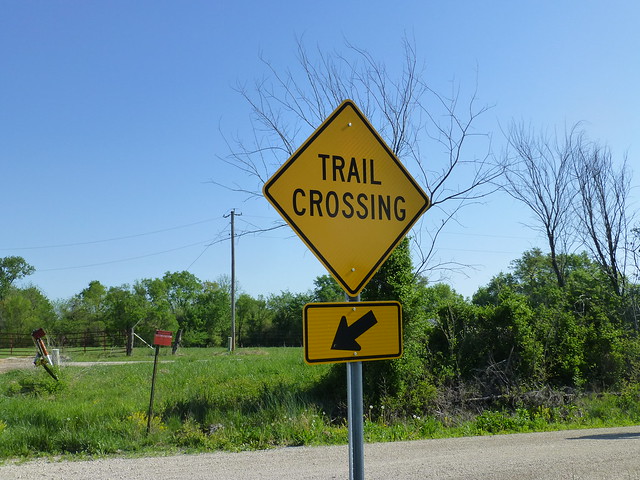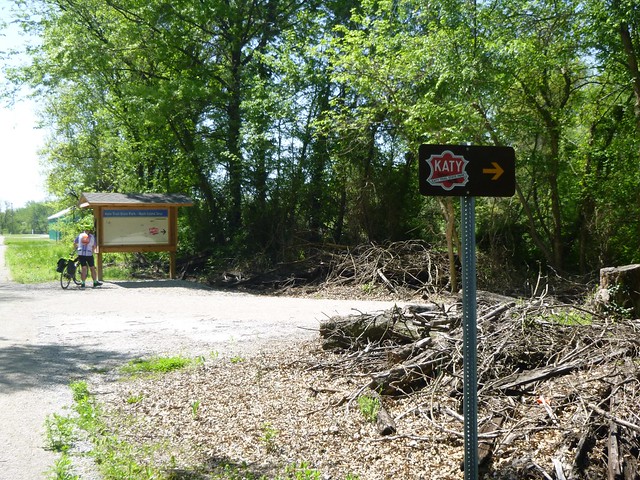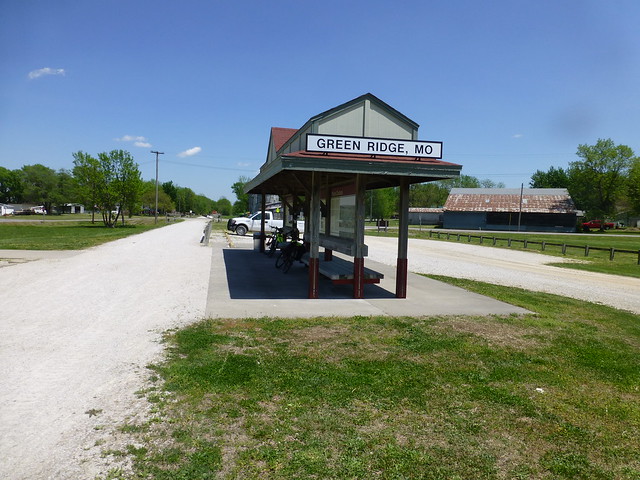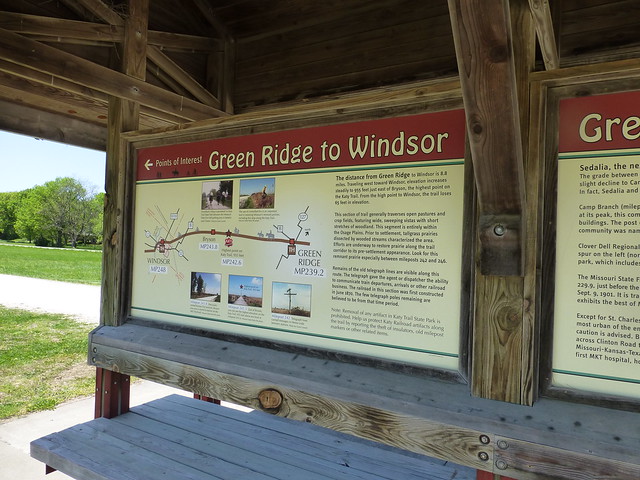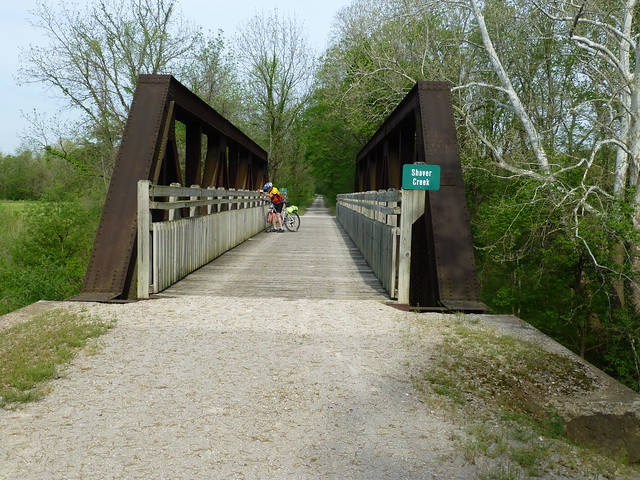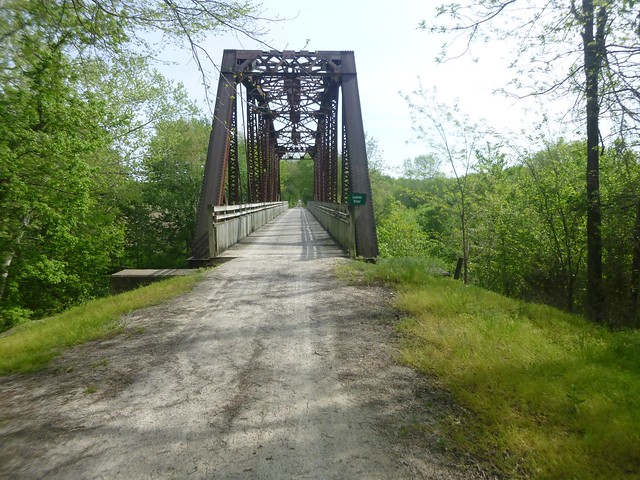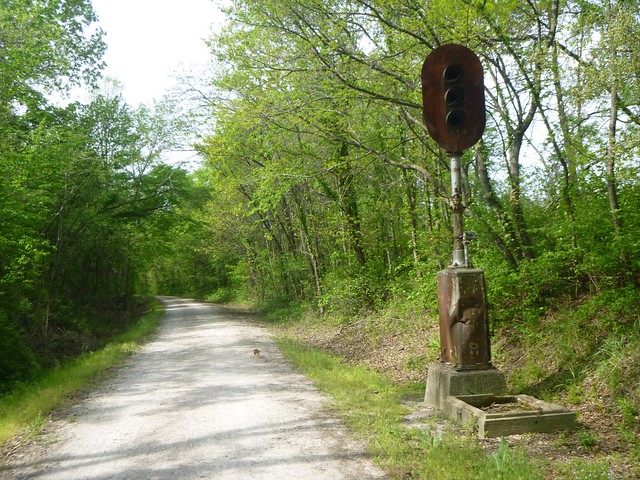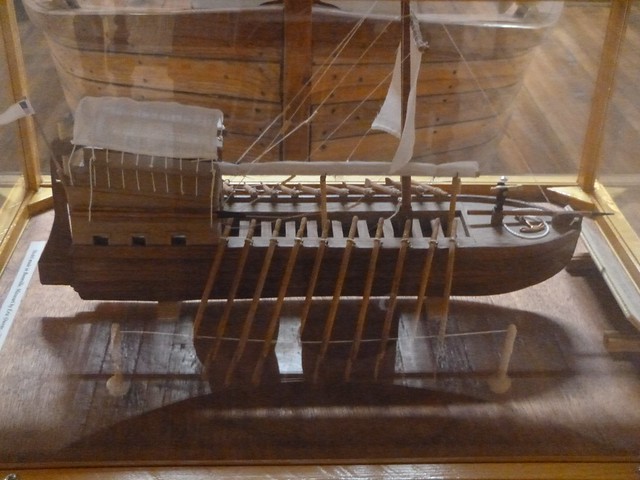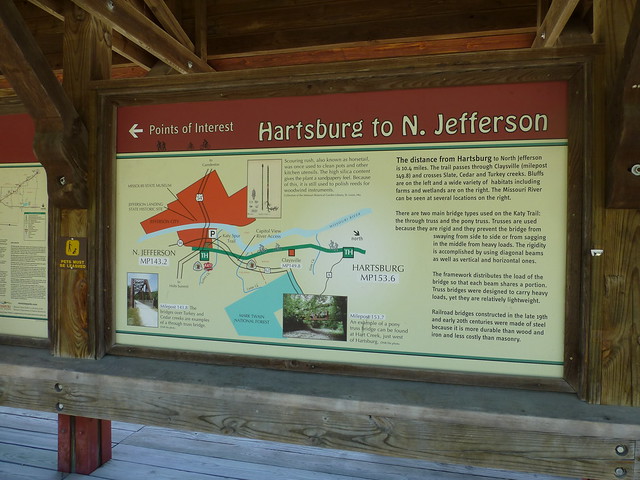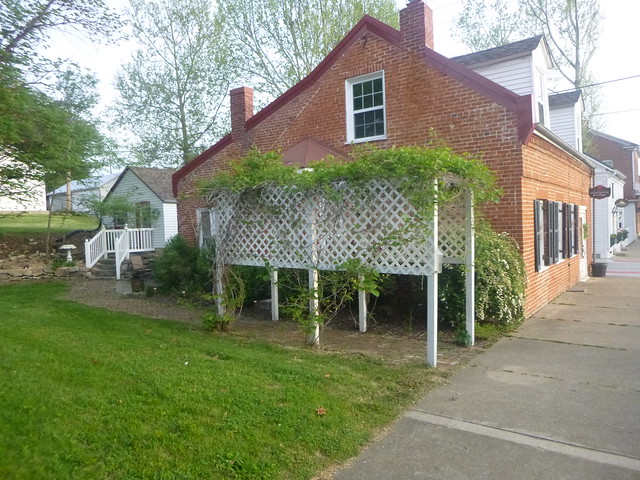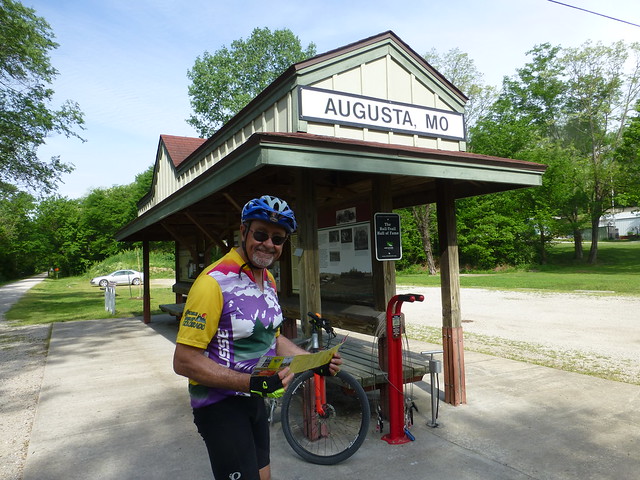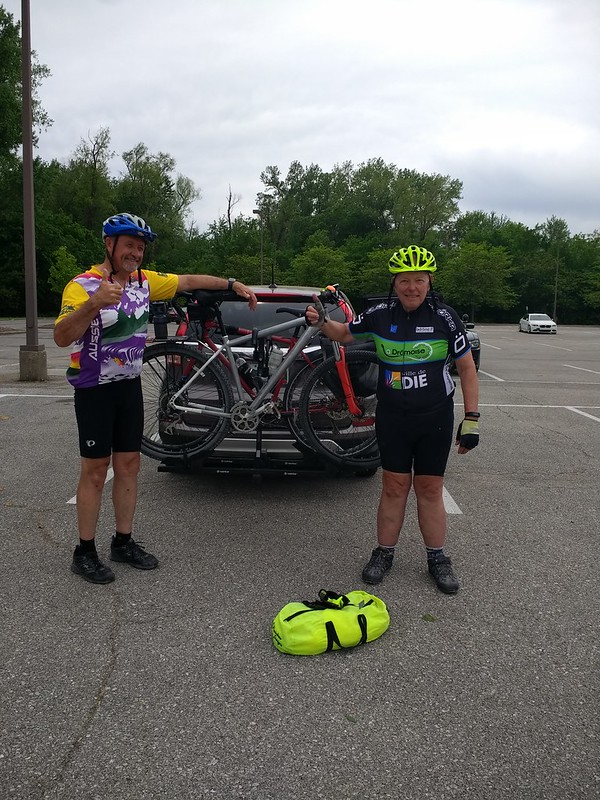Shortcuts:
- Day 1 – Chilhowee to Sedalia
- Day 2 – Sedalia to Columbia
- Day 3 – Columbia to Jefferson City to Treolar
- Day 4 – Treolar to McKittrick to Hermann
- Day 5 – McKittrick to St. Charles
- Preparation & Planning
- View all of the entries as one page
Introduction
The period between 1870 and 1890 had much in common with the Dotcom bubble one hundred years later, only instead of computers, the investment of choice was railroads. Railroads sprang up all over, but nowhere more enthusiastically than the midwest. Many started in major cities like Chicago, St. Louis or Milwaukee, but others extended their lines from smaller towns, such as the Atchison & Topeka (later Atchison, Topeka & Santa Fe, now BNSF). A group of investors in Junction City, Kansas thought it would be a good idea to build a railroad to ship their grain crops to Kansas City and Texas (hence the acronym, K-T); 
so they promoted a railroad to Parsons, Kansas, then when they were temporarily thwarted at the Oklahoma border because nobody had thought to gain the permission of the Native Americans who owned the land, directed their construction crews towards St. Louis and Kansas City. After a pause at Boonville, more bonds were sold, a massive bridge was constructed across the Missouri, and track crews raced to St. Louis. And the Missouri-Kansas-Texas lines were formed. The route from Boonville to Matchens, the eastern end of the line, follows the Missouri River bottom. That’s great for railroading, since it’s astonishingly flat, and has few, gentle curves. But it’s also susceptible to catastrophic floods. Floods wiped out swaths of the railroad several times during the Katy’s 100 years of operation.
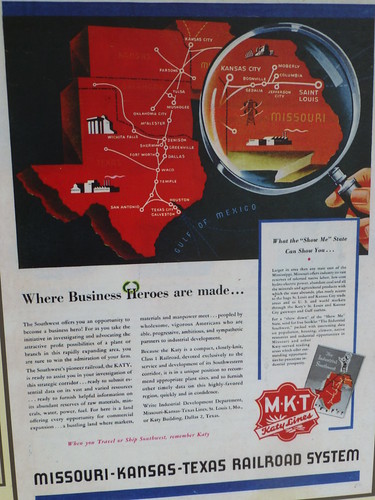
The Missouri portion of the M-K-T railroad never was an overwhelming success, despite the optimistic spin from their PR department (click on the ad to the left to read it), since the line paralleled the older Missouri Pacific, and stopped near St. Louis and near Kansas City, bypassed Jefferson City, and depended to a large extent on seasonal grain shipments for income. And periodic floods wiped out large swaths of the railroad. It went through several reorganizations and bankruptcies. When the railroad was purchased by the Missouri Pacific and then Union Pacific, the Missouri MKT line was doomed, and most of the tracks were abandoned. The last trains ran in 1986.
A generous donation (like $2.2M generous) from the son of the founder of the Edward Jones investment company purchased the right of way; in 1991, the Union Pacific donated 33 miles of right of way between Sedalia and Clinton. The first part of the trail was was opened in 1990, and the entire 240 miles has become a state park.
Meanwhile, the Rock Island railroad, which also served Kansas City and St. Louis, was abandoned and a portion acquired by Missouri State Parks. The 47.5 mile segment from Pleasant Hill, about 25 miles from Kansas City, to Windsor was completed last year.
From the Missouri State Parks map:
“Trail users are reminded of the trail’s railroad history as they catch glimpses of old telegraph poles and other remnant pieces of the railroad’s past. The trail passes over numerous truss bridges on its route. Four fully restored historic depots evoke the bygone grandeur of passenger service on the MKT, while the stone railroad tunnel at Rocheport recalls the ingenuity required to complete the MKT rail line.
“Katy Trail State Park also takes users through a slice of rural history as it meanders through the small towns that once thrived along the railroad corridor. These communities make great places to stop and explore during a visit to the trail, since the majority are located adjacent to designated trailheads.
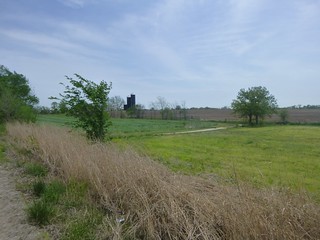 The majority of the Katy Trail closely follows the route of the Missouri River so trail users often find themselves with the river on one side and towering bluffs on the other. The trail travels through many types of landscapes including dense forests, wetlands, deep valleys, remnant prairies, open pastureland and gently rolling farm fields. In the spring, the trail is brightened with flowering dogwood and redubd, while the fall is colored with the rich reds and oranges of sugar maple, sumac and bittersweet.
The majority of the Katy Trail closely follows the route of the Missouri River so trail users often find themselves with the river on one side and towering bluffs on the other. The trail travels through many types of landscapes including dense forests, wetlands, deep valleys, remnant prairies, open pastureland and gently rolling farm fields. In the spring, the trail is brightened with flowering dogwood and redubd, while the fall is colored with the rich reds and oranges of sugar maple, sumac and bittersweet.
Now, please join Georgia, Gene, Maggie and me on this adventure.
Notes: Scroll down for each day’s diary. If you want to see any photo in more detail, just click on it. All of the Strava links will lead you to more detail, including maps. Please feel free to leave comments.
[stextbox id=”download”] Occasionally you’ll find highlighted text boxes (like this one). Each contains music appropriate for what you’re reading. If you want to listen to the music, just click on the audio player. [/stextbox]




